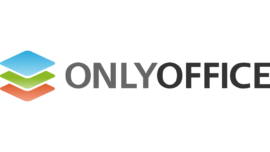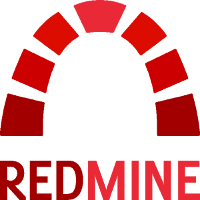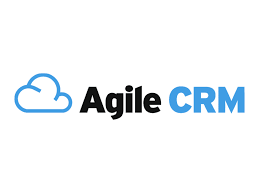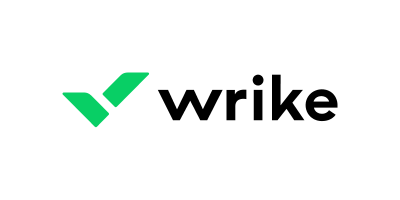-
Confluence: Best for collaboration tools
-
Jira: Best for software development teams
-
Odoo: Best for versatility
-
OnlyOffice: Best for medium and large businesses
-
Redmine: Best free and open-source solution
-
Agile CRM: Best for basic project management
Project management solutions allow for efficient task management, project progress tracking, smooth team collaboration and several other benefits. There are several project management applications that work on Linux. In this article, we share the six best Linux project management software in 2023. You will get to learn about the key features, pros, cons and pricing for each software. We also shared some tips on choosing the best Linux project management software for your needs.
Jump to links
- Linux project management software comparison
- Confluence: Best for collaboration tools
- Jira: Best for software development teams
- Odoo: Best for versatility
- OnlyOffice: Best for medium and large businesses
- Redmine: Best free and open-source solution
- Agile CRM: Best for basic project management
- Key features of Linux project management software
- Methodology
- Choosing project management software for Linux
6 Best Linux project management software: Comparison table
Here is how the best Linux project management software compare in terms of core features:
| Issue tracking | Native time tracking | Built-in Gantt charts | Resource allocation | Starting price | |
|---|---|---|---|---|---|
| Confluence | Basic | No | No | No | $5.75 per user per month |
| Jira | Advanced | Yes | Yes | Yes | $7.75 per user per month |
| Odoo | Basic | Yes | No | Yes | $24.90 per user per month (access to all Odoo apps) |
| OnlyOffice | Basic | Yes | Yes | No | $2200 per year one server with 50 users |
| Redmine | Advanced | Yes | Yes | Yes | Free |
| Agile CRM | Basic | No | No | No | $8.99 per user month |
Featured partners
Confluence: Best for collaboration tools

Confluence is a project management solution available on Linux. The product is developed by Atlassian, who has also developed Trello, Jira and Bitbucket. Confluence is geared towards users that need team collaboration tools and a virtual workspace to manage projects. The software is ideally suited for small businesses that need a collaborative and open workspace.
Pricing
- Free plan: Up to 10 users and 2 GB of file storage.
- Standard plan: $5.75 per user per month with up to 50,000 users and 250 GB of file storage.
- Premium plan: $11 per user per month with unlimited storage and premium support.
- Enterprise plan: Customized pricing.
The paid plans offer a discount for a higher number of users, so the more users you have, the lower the rate per user.
Features
- Wide range of templates: Users get access to a variety of templates from product management to marketing plans. The templates help simplify project management.
- Team communication tools: With Confluence, you get real-time editing, version history tracking, commenting, notifications, task delegation and several other team collaboration tools.
- Client access: Confluence offers for external users to collaborate on certain project content. The software has a specific set of permissions to ensure the external users get limited access.
Pros
- Outstanding team collaboration tools.
- Extensive range of templates.
- Powerful access control and user permission features.
Cons
- Some core project management features, such as analytics, are only available in paid plans.
- Interface does not feel intuitive.
Jira: Best for software development teams

Jira is a project management software by Atlassian. It is widely used by software development teams for issue tracking and task management. However, Jira is flexible and offers several customization options that allow it to be used by other types of users. With Jira, you also get support for Agile and Scrum.
Pricing
- Free plan: Up to 10 users and 2 GB of file storage.
- Standard plan: $7.75 per user per month with up to 35,000 users and 250 GB of file storage.
- Premium plan: $15.25 per user per month with unlimited storage and premium support.
- Enterprise plan: Customized pricing.
The paid plans offer a discount for a higher number of users, so the more users you have, the lower the per-user rate.
Features
- Issue tracking: The issue tracking feature of Jira allows users to manage all issues in a centralized location. You can create tickets, assign team members, set deadlines and track progress.
- Roadmap: Jira’s roadmap feature allows users to plan and visualize project progress. You can either choose to view a high-level overview of the project or dig deeper into the project details.
- Agile development: With Jira, get Kanban and Scrum boards that can be used by software development teams to manage sprints and track project progress.
Pros
- Impressive free plan with several project management features.
- Robust analytics and reporting tools.
- High level of security.
- Scrum boards for Agile sprints.
Cons
- Limited tools for external collaboration.
- Steep learning curve.
Odoo: Best for versatility

Odoo, formerly named OpenERP, is a suite of business apps, including a project management solution. The software is highly customizable and can be hosted on the cloud or used as an installed on-premises project management solution. With Odoo, you get a variety of project views, including Kanban boards and calendars, to help visualize project progress. Users also get access to time tracking, budget management and resource allocation tools.
Pricing
- Free: Limited to one app only, but allows unlimited users.
- Standard: $24.90 per user month with annual billing.
- Custom: $37.40 per user per month with annual billing.
Features
- Multiple views: You get a variety of project views, including Gantt charts, to track deadlines and timeline progress easily. There is also a calendar view to highlight project deadlines.
- Collaboration tools: Odoo offers a full range of collaboration tools, including chatting features, activity logs, customized alerts, email integration and real-time updates.
- Reporting: With the reporting feature, you can build your own dashboard, perform a detailed analysis of financials, view task statistics and more.
Pros
- Seamless integration with other Odoo applications.
- Open-source model which allows for extra flexibility.
- Vibrant community for technical support.
Cons
- No official updates or maintenance services.
- Not suitable for complex or industry-specific use cases.
OnlyOffice: Best for medium and large businesses

OnlyOffice is an open-source project management software designed to boost productivity and provide a platform for internal team collaboration. One of the key advantages of OnlyOffice is that it offers a single application for documents, presentations and spreadsheets. This makes it an excellent alternative to the Microsoft Office suite. The interface is similar to Microsoft products, with a command bar at the top with product features.
Pricing
The pricing model is in blocks of 50 users:
- Enterprise: $2200 per server with 50 users.
- Enterprise Plus: $3300 per server with 50 users.
- Enterprise Premium: $4500 per server with 50 users.
Features
- Document Manager: Users can edit, store, organize and share their documents through this feature. You can also set user permissions for users and groups and collaborate in real time with teammates.
- Project views: You can create projects, set deadlines, prioritize tasks and view progress through multiple views, including Gantt charts.
- Presentation editor: With the presentation editor, users can create, edit and share visually-appealing slides in various formats. You can add customizable tables, charts and statistics to the presentation.
Pros
- Familiar interface for Microsoft users.
- Several customization options.
- User-friendly.
Cons
- Mobile app is lacking in functionality.
- Pricing model not suitable for small teams.
- Limited workflow management.
Redmine: Best free and open-source solution

Redmine is one of the few completely free project management solutions for Linux users. The software comes without the backend installed, so you will self-install the software, which includes setting up your own database. Redmine is geared towards software development teams who are familiar with how to install and maintain the software. The software is versatile, making it suitable for different use cases.
Pricing
Redmine is available for free. There are no paid plans.
Features
- Plug-in directory: The developers offer a plug-in directory where you can find different tools to expand Redmine’s functionality. You can even create new plug-ins.
- Gantt charts: With Gantt charts, users can get a quick overview of project progress and task dependencies.
- Collaboration and communication: Redmine offers a variety of collaboration and communication tools. You get features such as wiki pages, forums and document sharing to keep everyone on the team aligned on the project.
Pros
- Free.
- Feature-rich.
- Versatile and customizable.
- Extensive directory for plug-ins.
Cons
- Requires self-installation.
- Support is limited to online communities.
Agile CRM: Best for basic project management

Agile CRM is primarily a customer relation management (CRM) solution for Linux users; however, the software does offer some basic project management features, including team collaboration and task management.
Pricing
- Free: limited to 10 users.
- Starter: $8.99 per user month with annual billing.
- Regular: $29.99 per user per month with annual billing.
- Enterprise: $47.99 per user per month with annual billing.
Features
- Task management: Agile CRM software offers basic task management features. Users can create and assign tasks, set due dates and view progress.
- Integration with customer data: As CRM software, there is a lot of customer data in the application. Agile CRM allows you to utilize this data within the context of the project.
- Project milestones: This feature acts as a checkpoint to track project progress. You can track project milestones, mark achievements and set deadlines through Agile CRM.
Pros
- Deep integration with customer data.
- Impressive automation features.
- Integration with several business apps.
Cons
- Lack of advanced project management tools.
- Weak reporting and analytics tools.
Key features of Linux project management software
Issue tracking
Issue tracking is most commonly used by software development teams to address bugs. However, this feature is also used for other project management tasks, such as identifying project-related risks, issues or tasks that need attention. It allows project managers to efficiently resolve issues to keep projects on track.
Native time tracking
Time tracking features allow you to estimate the time needed to complete tasks and record actual time spent on tasks. This data is useful in workload management, resource planning, forecasting and budgeting. While most project management solutions on Linux can integrate with third-party time tracking applications, you get a more seamless experience with a native feature.
Built-in Gantt charts
Gantt charts, also known as roadmap tools, are a popular feature in project management tools. They are designed to illustrate how the project is progressing in relation to the planned project schedule. Users get to identify task dependencies and project hurdles so they can address these issues and keep the project on track.
Resource allocation
Project managers and business owners can use resource allocation tools to optimize their projects by assigning tasks to the right team members. With resource planning tools, you can also check the resource availability and capacity of your team to avoid conflicting tasks or overloading assignments.
Methodology
This best project management software for Linux was compiled through a combination of hands-on reviews of the application and analysis of information available online, such as customer ratings and reviews. We looked at several parameters, including the overall usability of the software, pros, cons, pricing models and use cases.
How do I choose the best Linux project management software?
Choosing the best project management software for any operating system requires careful consideration. In the case of Linux, the options might be more limited compared to software available for Windows or Mac operating systems. Therefore, as a first step, you need to shortlist software that are compatible with Linux.
While open-source software is common with Linux, this is not a requirement, as several project management solutions for Linux are proprietary or closed-source software. A key disadvantage of open-source software is that you don’t get official support for the installation and maintenance of the software. However, the advantage is that you get more flexibility in how you want to use the software.
You also need to identify your priorities, as each software has its unique pros and cons. For example, if you are an enterprise, you might need certain advanced features that are not available in basic project management software.
Some of the core features to consider include tools for team collaboration and communication, time tracking, project views and resource allocation. You also need to consider the scalability of the product, pricing model and integration with your existing tech stack.











